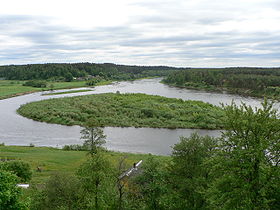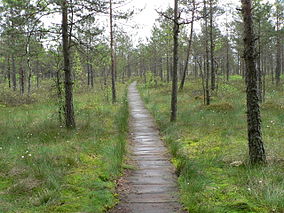|
Dzūkija National Park
The park belongs to both the Association of Baltic National Parks and the Federation of European National Parks.[3] FeaturesThe park enjoys a more continental climate than other parts of the country. The average temperature in January drops to -5.4 °C and rises to +17.7 °C in July.[4] Most of the territory in Dzūkija National Park is covered by forests dominated by pine and other trees, such as birch, spruce, and alder grove. The park contains 30 different rivers and streams and belongs to the Nemunas river basin.[5] South of Dzūkija National Park is the Čepkeliai Marsh Reserve, which is the largest bog in Lithuania. Its most distinctive landscapes are the mainland dune massifs, located in Marcinkonys, Lynežeris, Grybaulia, and Šunupis. TourismEntry to Dzūkija National Park is free, but some activities require permits, such as kayaking, angling, and entry into the Čepkeliai Marsh Reserve. Other tourism activities include berry and mushroom foraging, hiking, and bicycling.[6] Settlements The administrative center of the park is in Marcinkonys and the other important town is Merkinė. The ethnographic village of Zervynos can be found within the park. See alsoReferences
Wikimedia Commons has media related to Dzūkija National Park. External links |
||||||||||||||||||||||
Portal di Ensiklopedia Dunia


